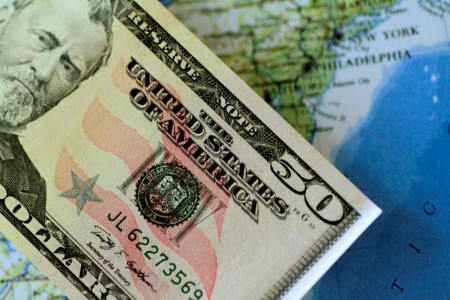




Quarterly Economic Growth Release: More BSP cuts to come
 DOWNLOAD
DOWNLOAD

Monthly Economic Update: Fed catches up
 DOWNLOAD
DOWNLOAD

Inflation Update: Steady and mellow
 DOWNLOAD
DOWNLOAD


Dollar slips after unexpected rise in US producer prices

NEW YORK/LONDON – The dollar eased on Tuesday after an unexpected increase in US producer prices in April amid strong gains in the costs of goods and services, indicating inflation remained stubbornly high early in the second quarter.
The report from the Labor Department also showed wholesale goods prices rising solidly last month, though the cost of food declined. Traders trimmed their expectations for the Federal Reserve to cut interest rates in September after the report.
The dollar index, a measure of the US currency against six major peers, slid 0.02% to 104.99, right in the middle of 103 to 107 in what Brad Bechtel, global head of FX at Jefferies in New York, called its range for the year.
“It’s pressing kind of neutral, almost as if people have cleaned up their positioning and are kind of flat going into tomorrow,” he said, referring to the release on Wednesday of the consumer price index (CPI) for April.
“In terms of things like carry trades, those are still very much well positioned,” Bechtel said. “Aussie-yen, Mexican-yen, and even the dollar versus the yen to some extent, risk appetite is still there.”
The Australian dollar-yen cross rate rose to the second-highest this year, outside of a more than 10-year high of 104.95 touched on April 29. It was last up 0.36% at 103.59. The euro rose 0.28% to 1.0820.
The producer price index for final demand rose 0.5% in April after falling by a downwardly revised 0.1% in March, the Labor Department’s Bureau of Labor Statistics said.
Economists polled by Reuters had forecast that PPI, which can be volatile, would gain 0.3% after a 0.2% rise in March. In the 12 months through April, the PPI increased 2.2% as expected after climbing 1.8% in March.
CPI data may provide more insight into how fast the Fed might cut interest rates. But one data print is unlikely to persuade policymakers that the pace of inflation is slowing enough to permit a rate cut in the near term, said Thierry Wizman, global FX and rates strategist at Macquarie in New York.
The Fed may not cut at all this year and if it does, it may “cut once and it’ll be late in the year,” he said, adding that a real downward move in rent inflation may change his mind.
YEN WATCHED
Wednesday’s report on core consumer prices is expected to show CPI rose 0.3% month-on-month in April, down from a 0.4% growth the prior month, according to a Reuters poll.
Fed Chair Jerome Powell gave a bullish assessment on Tuesday of where the US economy stands, with an outlook for continued above-trend growth and confidence in falling inflation that, while eroded by recent data, remains largely intact.
Speaking in Amsterdam, Powell’s comments largely restated those made at his press conference after the Fed’s last meeting.
Money markets have dialed back their expectations of Fed rate cuts to about 44 basis points of easing this year, according to LSEG data.
Earlier in Europe, sterling fell sharply before paring losses after Bank of England Chief Economist Huw Pill said it was not unreasonable to believe that over summer there might be enough confidence to consider rate cuts.
Sterling rose 0.25% to 1.2591 after falling to USD 1.2510 following Pill’s remarks.
Traders are also closely watching the yen, down to May 1 levels, which then saw suspected interventions by Japanese authorities. It was last 0.12% lower at 156.425 per dollar.
Japan’s Ministry of Finance is suspected to have intervened in the currency market at the end of April through early May after the yen hit a 34-year low of 160.245 on April 29.
But the market remains bearish on the currency given the massive gap between Japan’s ultra-low yields and those in other major economies.
The Chinese offshore yuan was trading near a two-week low after US President Joe Biden unveiled a bundle of steep tariff increases on an array of Chinese imports, including electric vehicles, computer chips and medical products.
The offshore yuan was last flat on the day at 7.240, after falling earlier in the day to its lowest level since May 5.
(Reporting by Herbert Lash; Additional reporting by Joice Alves in London and Ankur Banerjee in Singapore; Editing by Marguerita Choy, Andrew Heavens, and Alison Williams)
This article originally appeared on reuters.com





 By Reuters
By Reuters